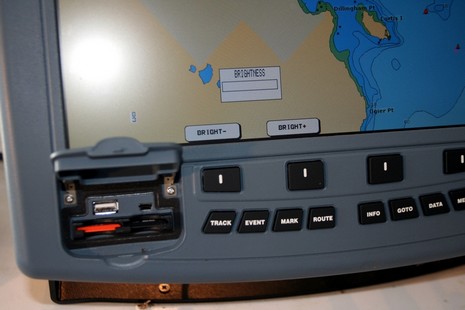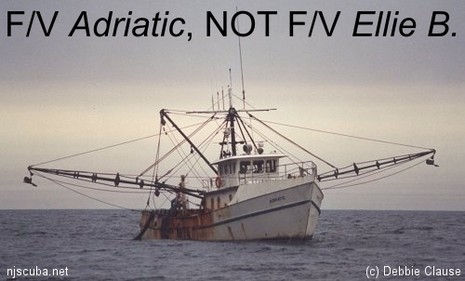Si-Tex 15, & a naive idea

I may abstain from off-the-cuff product comparisons for a while! But whereas I’m already in trouble today, I will express my very mixed feelings about the ColorMax 15, which I actually tested. On the one hand, it’s a notable value—a big bright marine multifunction display with a fast processor and a lot of connectivity going for a street price of about $2,100. This unit may not have a standard Ethernet port, but it does have five NMEA 0183 I/O ports, some of which can be set up (see above) to interface with optional sonar and radar sensors (which may in fact talk Ethernet). It also has two USB ports, seen below, though no stated use for them at this time. That photo is also meant to show that the ColorMax may not dim down far enough for night use in some wheelhouses (without a funky fix I’ll cover one day). But what the unit really lacks is a user interface that takes good advantage of the generous screen space and I/O possibilities. For instance, as noted already in PMY, the only way you can get that four way split shown in the promo photo is to have both radar and sonar attached; you can’t even have two chart windows, let alone the sort of page, window, data box, etc. flexibility seen on most multifunction displays these days. Which brings me to this possibly naive idea: if Si-Tex were to open source a stripped down version of this machine’s code, maybe some amateur developers, and/or small resellers, would make it sing?
It also has two USB ports, seen below, though no stated use for them at this time. That photo is also meant to show that the ColorMax may not dim down far enough for night use in some wheelhouses (without a funky fix I’ll cover one day). But what the unit really lacks is a user interface that takes good advantage of the generous screen space and I/O possibilities. For instance, as noted already in PMY, the only way you can get that four way split shown in the promo photo is to have both radar and sonar attached; you can’t even have two chart windows, let alone the sort of page, window, data box, etc. flexibility seen on most multifunction displays these days. Which brings me to this possibly naive idea: if Si-Tex were to open source a stripped down version of this machine’s code, maybe some amateur developers, and/or small resellers, would make it sing?














If you take “Opensouce” to include a combination of published source code with an ecosystem approach where people could publish add-ons (Free or paid, source code or not) that an end user could selectively include in their charplotter, then my thoughts would be …
Although, I would think Garmin, and to a lesser extent Raymarine, would be much better positioned to reap the benefits of an open source strategy, this appears to be a sound strategic direction for this vendor to consider. Especially if they a) added an ethernet port, wi-fi port, nmea 2000, seatalk, and maybe even bluetooth and/or pcmia laptop style port
b) have proven initial compatibily with the entire suite of instruments from one or two marine networks of the vendors most used in the racing community (imagine dropping in your own algorithms for determining how your instruments should correct and display information for various conditions, and arranging remote control and display via one or more PDA platforms)
c) have proven capability with some of the precision sensors available from maretron and/or others
… then this could be category killer that, after getting enough participation in the racing community and add-on’s available in the ecosystem, could later succeed in the recreational market.
In making my comments above, I think the racing community is more able and more compelled to make the investment in such a product that has no installed base, and have access to the skills and be compelled to deal with the issues around a product that could potentially require many frequent software updates during it’s initial year or two.